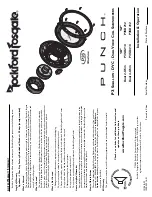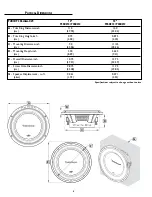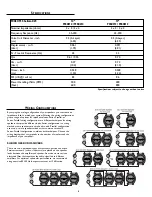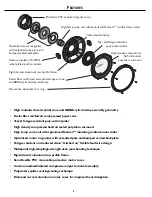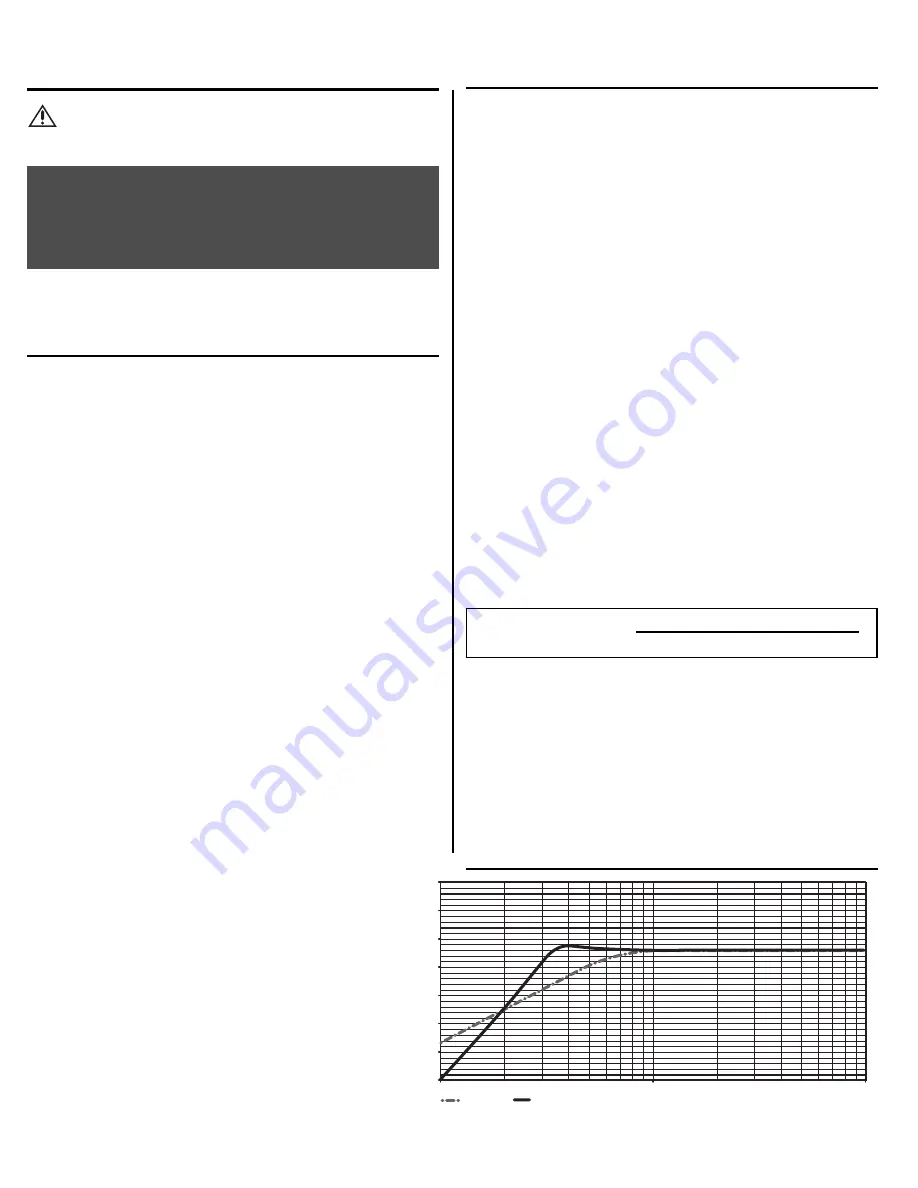
2
This manual outlines two specific types of enclosures that provide
distinctly different performance.This section is to help you decide
which type is best for your application.
SEALED ENCLOSURES
Sealed enclosures are the simplest to build.The most important part of
building a sealed enclosure is to make sure that the enclosure is airtight.
Using glue and some type of sealant on all seams will ensure solid
construction and prevent air leaks.The box volume will directly impact
the performance of the speaker. Larger enclosures will provide flatter
response and deeper bass where smaller boxes will provide a bump in
the response curve and generally higher output for greater SPL.
Advantages of sealed enclosures:
•
Small enclosures
•
Linear (Flat) response
•
No port noise
•
High power handling at all frequencies
•
Excellent for sound quality
•
Extended low frequency output when compared to vented enclosures
VENTED ENCLOSURES
Vented enclosures vary only from the sealed enclosure in that a vent or
port is added to “tune” the enclosure.The enclosures recommended are
designed for great overall performance. Larger boxes tend to be easy to
tune to lower frequencies while medium and small boxes are easier
to tune to higher frequencies.The vented design is less linear in
response than the sealed box but with noticeably more output at
the tuning frequency.
Advantages of vented enclosures:
•
Higher average output than sealed
•
Tuning frequency can be easily adjusted by changing port length
•
Deep bass response with lower power requirements
•
Great for high output with limited power
The graph shown here is a sample of how the F3 drop-off
point differs between sealed and vented enclosures.
BUILDING AN ENCLOSURE
To work properly, the walls of the enclosure must be rigid and not flex
when subjected to the high pressures generated by the speaker's
operation. For optimum performance, we recommend using 3/4" MDF
(Medium Density Fiberboard) and internal bracing.The enclosure should
be glued together and secured with nails or screws.
CALCULATING VOLUME
Calculating volume is merely a matter of measuring the dimensions in
inches and using the formula: H x W x D divided by 1728 (cubic feet).
See block below.
If two facing sides are of uneven length, add them together and divide by
two to take the average. Using this number will give you the volume
without the necessity of calculating the box in sections and adding the
sections together.The thickness of the baffle material reduces the internal
volume so this must be subtracted from the outside dimensions to
determine the internal volume.The speaker itself also reduces the
internal volume.The amount of air displaced by each model is listed on
the specification sheet and should also be subtracted from the gross
volume calculation.
S
AFETY
C
ARTON
C
ONTENTS
CAUTION:
Before installation, disconnect the battery
negative (-) terminal to prevent damage
to the unit, fire and/or possible injury.
PRACTICE SAFE SOUND™
Continuous exposure to sound pressure levels over 100dB may
cause permanent hearing loss. High powered auto sound systems
may produce sound pressure levels well over 130dB. Use common
sense and practice safe sound.
•
(1) Punch P3 Shallow Series Subwoofer
•
(1) Painted aluminum decorative trim ring
•
(4) Socket head trim ring screws
•
(8) Socket head wood screws
•
(1) Socket head driver bit
R
ECOMMENDED
E
NCLOSURES
V
ENTED VS
S
EALED
60.0
70.0
80.0
90.0
100.0
110.0
120.0
130.0
10.0
20.0
40.0
60.0
80.0
100.0
200.0
1000.0
Frequency, Hz
Sealed Box
Vented Box
Box Volume
Height" x Width" x Depth"
Divided by (cubic feet)
1728

